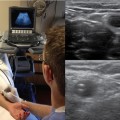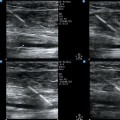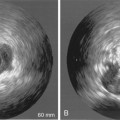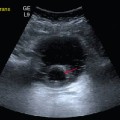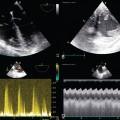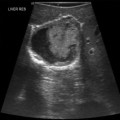21 The great potential of ultrasound in the study of lung parenchyma lies in its ability to detect alterations in parenchymal density resulting from loss of alveolar air with or without increase of interstitial fluids.1 Moreover, pleural disorders can be studied by direct visualization or indirect detection of abnormal fluids or air collected in the pleural space. Ultrasound abilities are based not only on the capacity to visualize real images of disorders (e.g., direct visualization of pleural effusion or lung consolidations) but also on analyzing various artifacts. The latter are generated by the acoustic interface created between parietal pleura and lung parenchyma and enable the detection of pneumothorax and various interstitial disorders. In trauma patients, bedside lung ultrasound readily identifies life-threatening disorders, such as hemothorax and/or pneumothorax, thus facilitating prompt treatment.2,3 In trauma patients who present without any life-threatening conditions, lung ultrasound can detect lesions that appear radio-occult on radiography (e.g., lung blast), thus optimizing the selection of patients undergoing whole-body computed tomography (CT) scans.4 In a trauma scenario, the lung can be examined by any transducer, from high-frequency transducers well-suited for surface scanning to microconvex transducers that facilitate scanning between the tiny acoustic bone windows of the thoracic cage. Convex transducers represent the optimal mixture between a large spatial visualization and penetration depth achieved by low frequencies. Apart from lung scanning, microconvex transducers enable the examination of the abdomen, heart, veins, and so on, which is a time-saving feature in trauma cases.5 Trauma patients usually lie supine and cannot be moved; hence emergency lung ultrasound can access the chest through its anterior and lateral areas. Scanning these areas is sufficient in most cases, but sometimes it is necessary to sweep the transducer above the diaphragm or toward the posterior aspect of chest. Initially, scanning is performed on longitudinal planes because the latter allow identification of the pleural line between two adjacent ribs.6 By slightly rotating the transducer along intercostal spaces, oblique views are obtained that allow visualization of a larger portion of the pleura and of the underlying lung parenchyma. Scanning a normally aerated lung permits visualization of the entire chest wall from skin to parietal pleura. The alveolar air creates an interface with the pleura and the soft tissues of the chest wall because of differences in acoustic impedance (air is an acoustic barrier). Hence visualization of the lung parenchyma below the pleural line is not feasible. The image corresponding to the normal lung is made by artifacts that represent chest wall’s reflections below the pleural line (“mirror effect” of the lung) (Figure 21-1).1 A-lines are horizontal lines visualized at constant intervals in the zone of artifacts and represent multiple reflections of the pleural line.7 Figure 21-1 Oblique scan of a normally aerated lung. The image above the pleural line (thick arrow) is a real anatomic reconstruction of the chest wall. From the pleural line to the A-line (thin arrow), the image represents a reflection of the chest wall (mirror effect) that moves synchronously with respiration. Air in the interpleural space cannot be visualized because it limits the penetration of the ultrasound beam. In case of pneumothorax, the static ultrasonographic lung image is similar to that of the normally aerated lung that adheres to the parietal pleura (Figure 21-2). The only difference is dynamic, because air between the two pleural layers does not allow visualization of any lung movement. Figure 21-2 Oblique scan in pneumothorax. The still image of the lung is not distinguishable from the normal pattern (mirror effect) of Figure 21-1. Dynamic analysis allows appreciation of absence of any movement of the mirror image against the chest wall. Lung sliding: Although visualization of lung sliding rules out pneumothorax (high negative predictive value), its absence has no sufficient diagnostic accuracy to rule in pneumothorax.8 This is mainly because lung sliding can be equally observed in other disorders, such as atelectasis, acute respiratory distress syndrome (ARDS), or selective intubation. Hence, in case of absent sliding, operators should always check for other basic ultrasound signs.5,9 B lines: Changes in normal air/fluid balance in lung zones (loss of air) generates vertical laser-like artifacts (B-lines).10 B-lines blur, or even completely erase, the “mirror effect.”1 Depiction of multiple and diffuse B-lines indicates loss of the lung’s aeration and increase of interstitial fluids.11 However, presence of air in the pleural space prevents B-line visualization.10 Thus even one isolated B-line rules out the diagnosis of pneumothorax. Absence of B-lines is not only observed in pneumothorax. In case of absence of lung sliding and B lines, other signs also should be evaluated to definitively rule in pneumothorax.
Lung ultrasound in trauma
Overview
The technique
The normal pattern
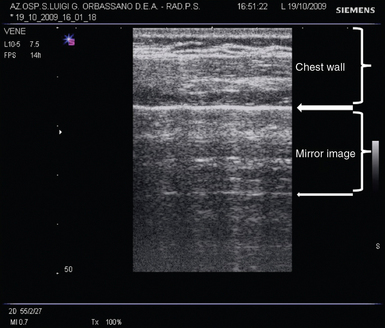
Pneumothorax
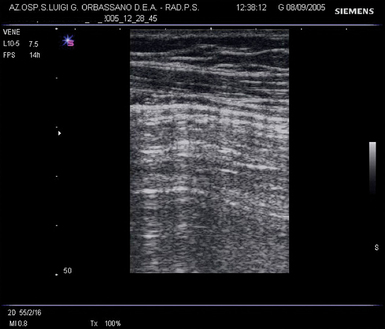
Ultrasonographic signs
![]()
Stay updated, free articles. Join our Telegram channel

Full access? Get Clinical Tree


Lung ultrasound in trauma

